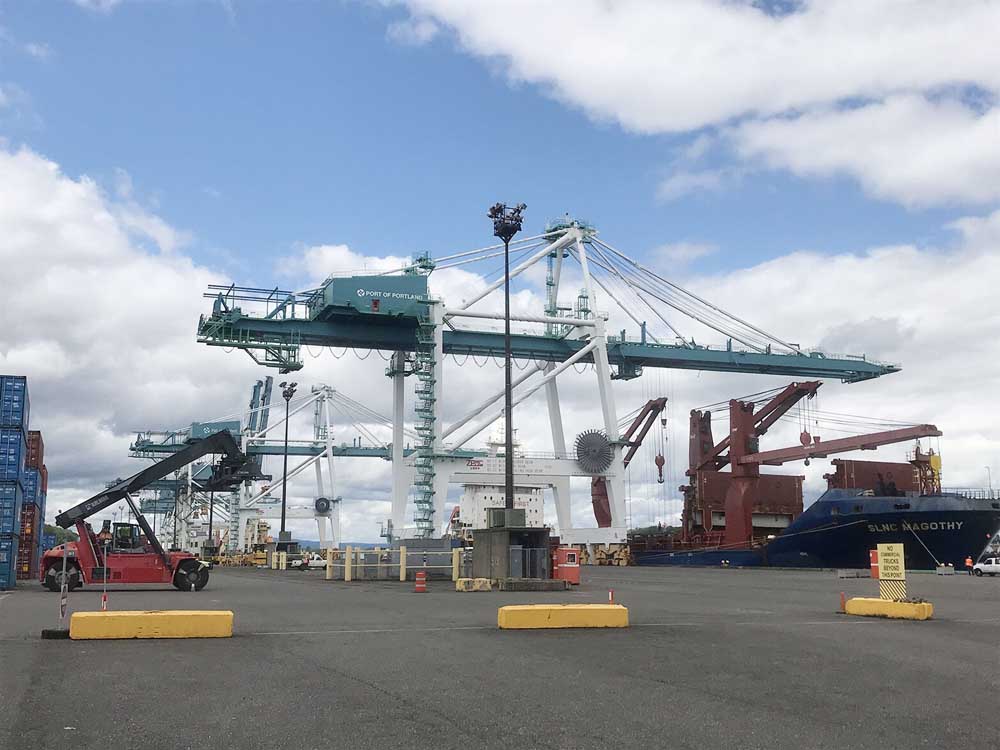Port of Portland plans to double container shipping volume
Published 9:30 am Monday, August 26, 2024

- Gov. Tina Kotek proposes to spend $40 million to keep open a cargo shipping terminal at the Port of Portland. It was scheduled to close Oct. 1.
To financially stabilize its beleaguered container terminal business, the Port of Portland expects to double the facility’s shipping volumes over the next eight years.
Increasing the number of containers handled by Terminal 6 from the current level of roughly 60,000 a year to at least 120,000 by 2032 is a key component of the business plan the port has submitted to Gov. Tina Kotek.
“This volume would indicate that Terminal 6 has recaptured a sizable portion of the regional container market, reducing transportation costs for Oregon shippers. It would also correlate to substantially improved financial performance,” according to the proposal, which was submitted to the governor on Aug. 23.
Terminal 6’s fate is relevant to Oregon’s agricultural exporters, who often prefer to ship straw, hay, seeds and other farm goods from Portland rather than more distant ports along Washington’s Puget Sound.
Kotek requested the business plan earlier this year when she vowed to seek $40 million in port investments from lawmakers to help keep the container shipping business running at Terminal 6. The port had planned to shut down the facility’s container business but changed its mind due to Kotek’s pledge.
“This report must comprehensively address what steps the port has and will take to reach out to impacted constituencies, implement a business plan that reduces losses in the 2025 budget year, and grows the container volume handled through the terminal,” the governor’s letter said.
Growing the number of container moves to 120,000 a year is on the lower end of the port’s forecast, as its business plan claims the facility could handle more than 320,000 containers annually if it served ships with more vessel space that traveled to more foreign destinations.
“Volume is the most critical factor affecting T6’s financial performance,” the report said, noting that the port expects container shipping to increase by 10% in its next fiscal year, which would add nearly $1 million to its operating income.
Charging ocean carriers 16-20% more for service, boosting the facility’s efficiency, and restructuring management costs will improve its operating income by another $1 million, according to the plan. Those changes would reduce the container business’s losses from $12.3 million to $10.2 million in the port’s next fiscal year, the report said.
“These actions will give the Port time to implement the mid- to long-term strategies to achieve financial sustainability,” the report said.
Operating losses could be further offset with $5 million that Kotek plans to ask from the legislative emergency board next month. The remainder of the $40 million pledged by the governor would consist of $15 million for river dredging and $20 million for capital improvements in her next biennial budget.
Apart from doubling the container volume, the port wants to hire a third-party operator to run Terminal 6, as it’s currently the only port on the West Coast to operate such a facility directly.
“This operating model exposes the Port to market fluctuations and financial risks that other West Coast public ports can share with private partners,” the business plan said.
The port had been pursuing such a deal earlier this year, but decided to shut down container shipping when negotiations fell apart.
Securing the agreement was stymied last year by a lack of funds for terminal modernization, but it could now be conditioned on the capital improvement funding’s approval during next year’s legislative session, according to the port.
The port wants to have an agreement in principle ready with a third-party operator by next January, or at least provide the governor with an update if more funding will be necessary for such a deal, according to the plan.
“If an agreement is not reached, the port will report back with recommendations on what is needed to successfully engage in a market solicitation process for a third-party operator,” the report said.
Though the container terminal business faces challenges due to its upriver location, which limits ship sizes and entails additional costs for river pilot services, Terminal 6 is not an obsolete facility, the report said.
“All cargo can’t flow through mega ports on mega ships – you also need niche ports,” the report said. “Supply chain resilience along the West Coast is critically needed, as we saw during COVID, geopolitical unrest in the Red Sea, and drought conditions affecting the Panama Canal.”








